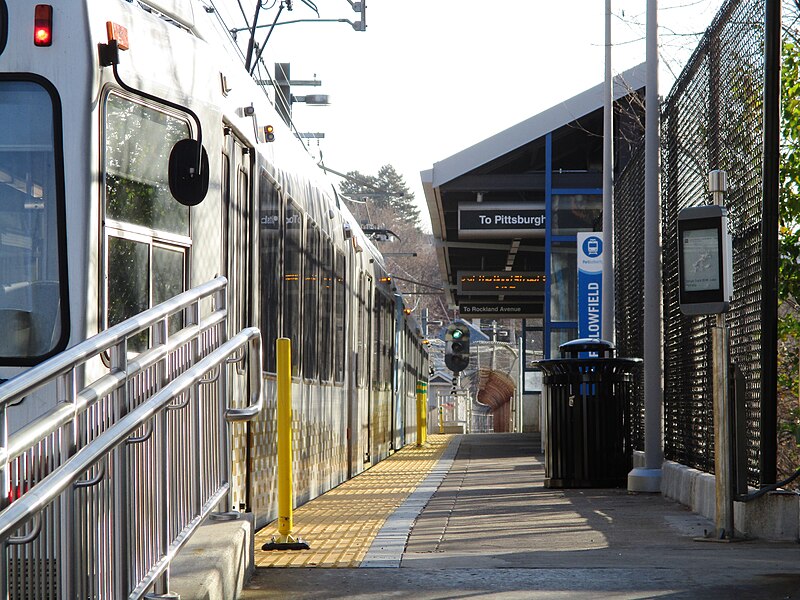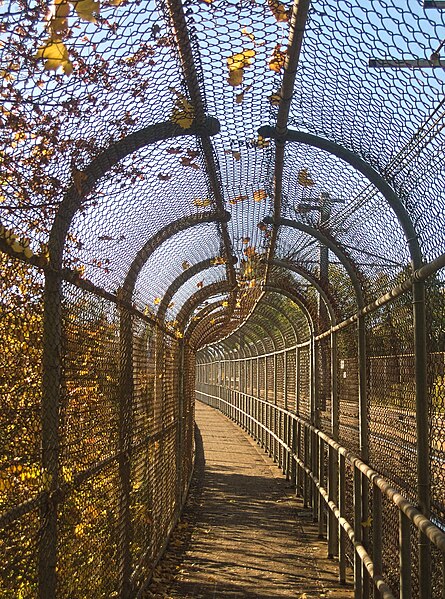
An inbound two-car Red Line train stops at the Fallowfield station in Beechview. The leading car is in the new chain-of-circles livery; the trailing car is in the older checkerboard livery.



There are some sections of the Red Line through Beechview and Dormont where the streetcars seem to be carefully threading their way through the back yards of the neighborhood.

The Fallowfield viaduct is an important transportation link, both for streetcars and for feet. It connects central Beechview to the streets on the next hill over. But old Pa Pitt admits that he publishes this photograph, not because it is useful and educational, but simply because the lines and colors made an interesting composition.

Many streets in the Pittsburgh area used to have a median where the streetcars ran in a separate right-of-way: Center Avenue in West View and Brookline Boulevard in Brookline are two examples. Broadway in Dormont is the only one where the streetcars still run in the median. We could also count the Silver Line through Bethel Park as a broad instance of the same kind of development, although the streets between which the trolleys run have different names.

Other cities have King Boulevards; we have an East Busway that is officially named for Dr. King, but no one ever uses the whole official name, because by the time you have pronounced the decasyllabic name “Mar-tin Lu-ther King Ju-nior East Bus-way,” you have forgotten what you were talking about. Why not just “King Busway?” We do less honor to Dr. King by using his full name as the name of the busway, because no one ever speaks it.
At any rate, here is the East Busway with two of its stations, in pictures that demonstrate why this busway is such a useful transit artery. Along with the railroad, it runs in a hollow that winds through Bloomfield and Shadyside, giving it the grade separation of a subway without the construction cost. It is in effect a rubber-tired metro line. Pittsburgh invented “bus rapid transit,” and for the most part we did it right.

Above, East Liberty; below, Negley.

A two-car Blue Line train comes in from Wood Street and heads out under the Allegheny to North Side; a Silver Line car departs for Wood Street. You can see the video at full resolution on its Wikimedia Commons hosting page.
The video is obviously hand-held. There are some very sophisticated video-stabilizing algorithms in our video-editing software, but the parade of identical square windows in a moving trolley makes them panic and jiggle the picture all over the screen, so we give you the video without stabilization.